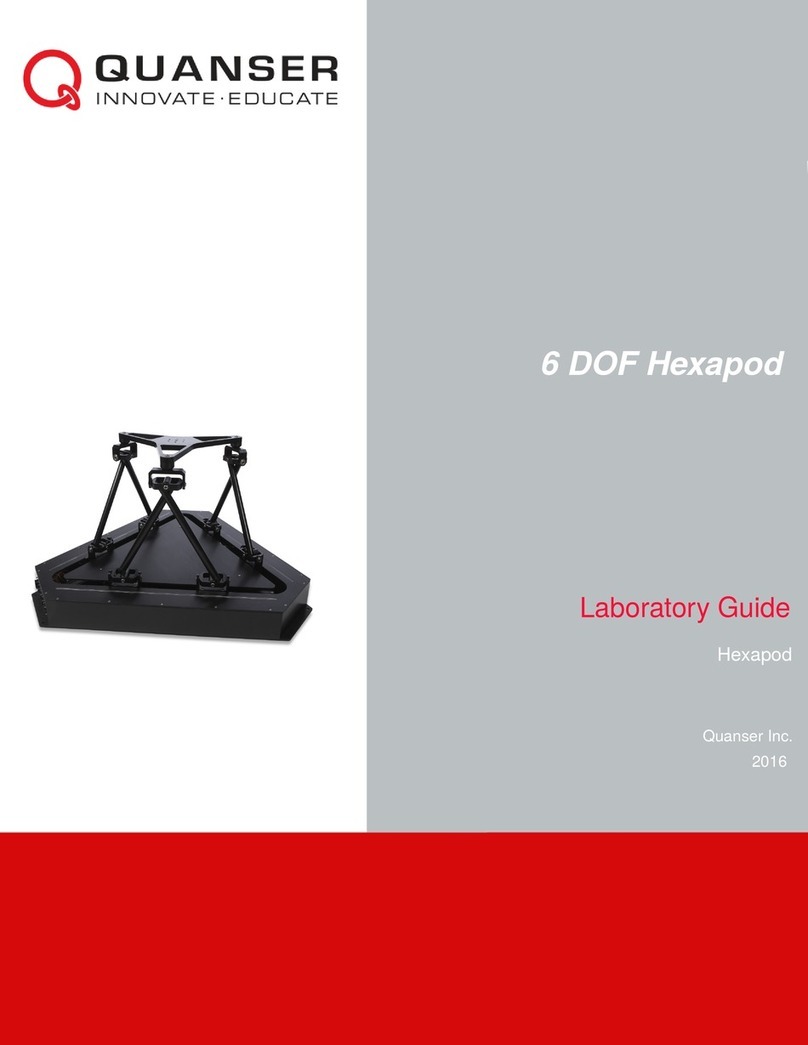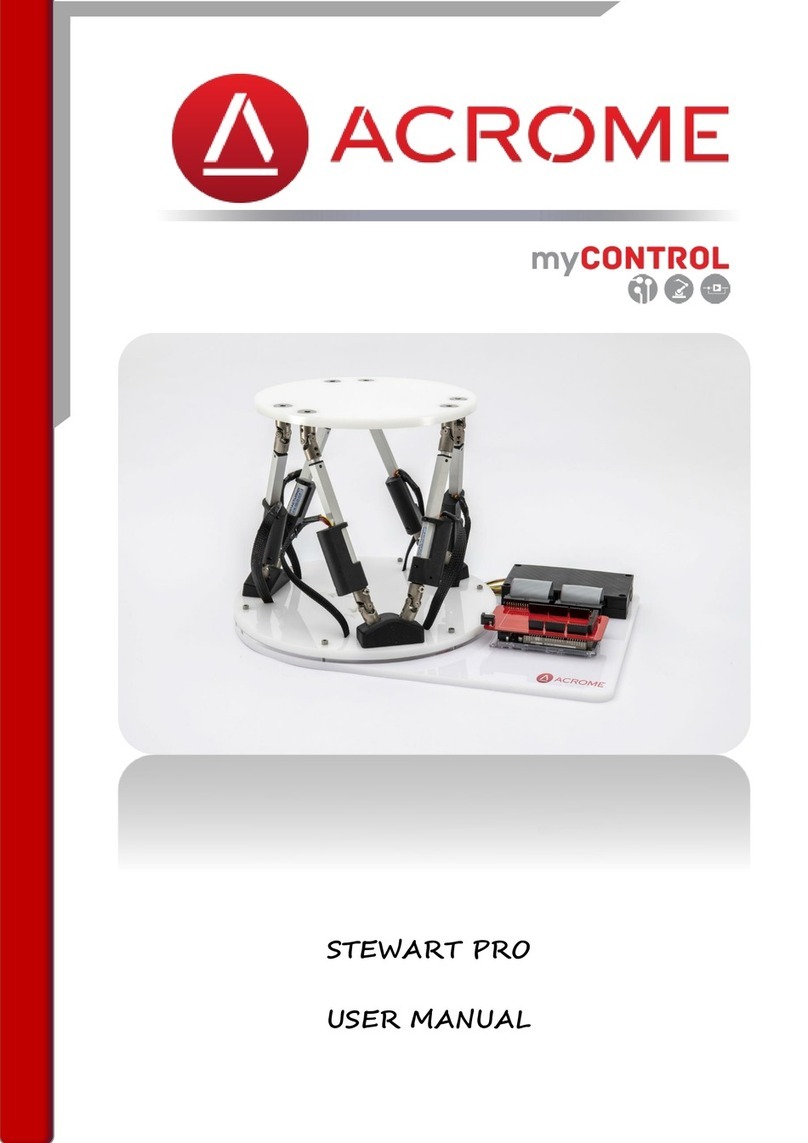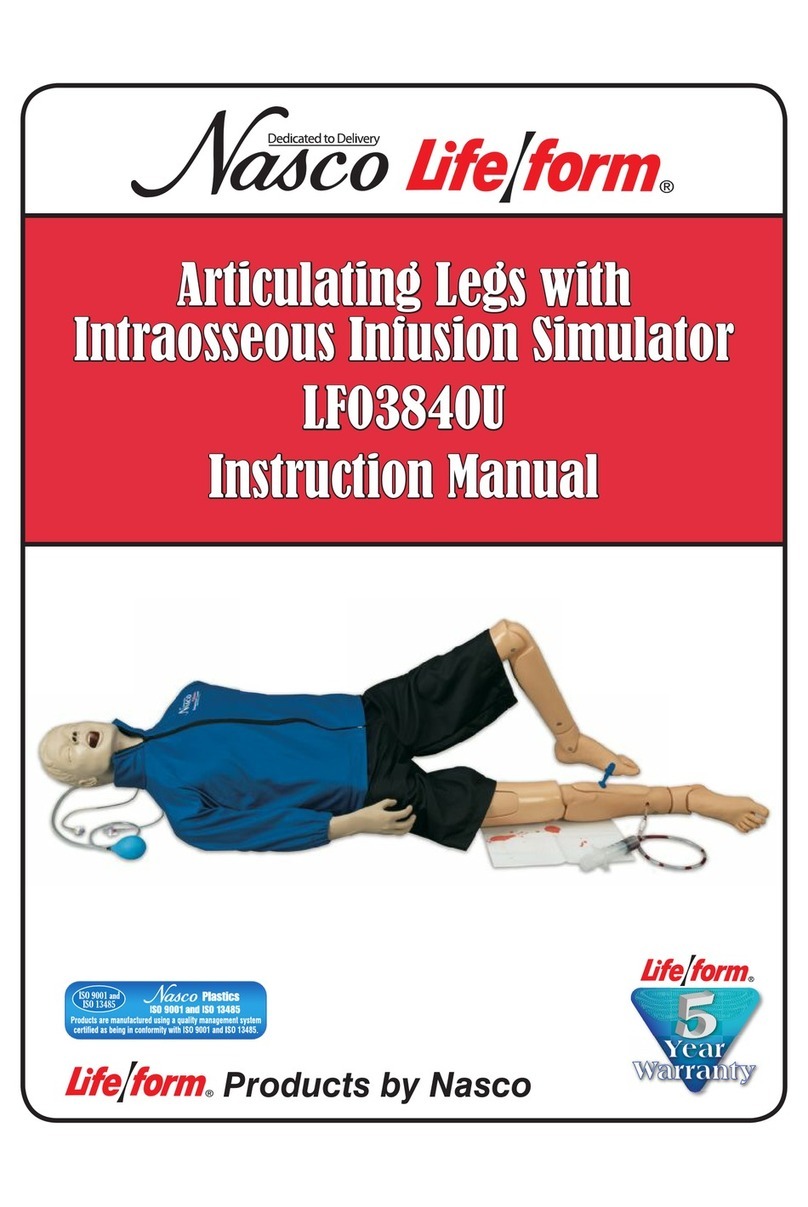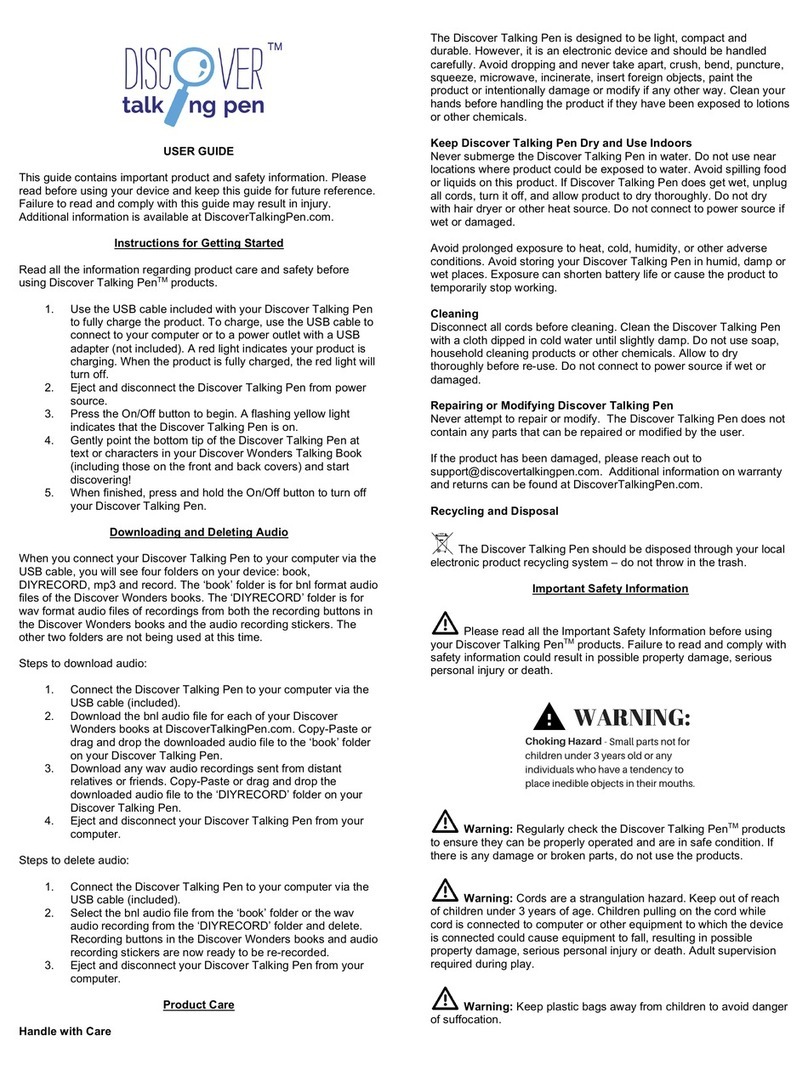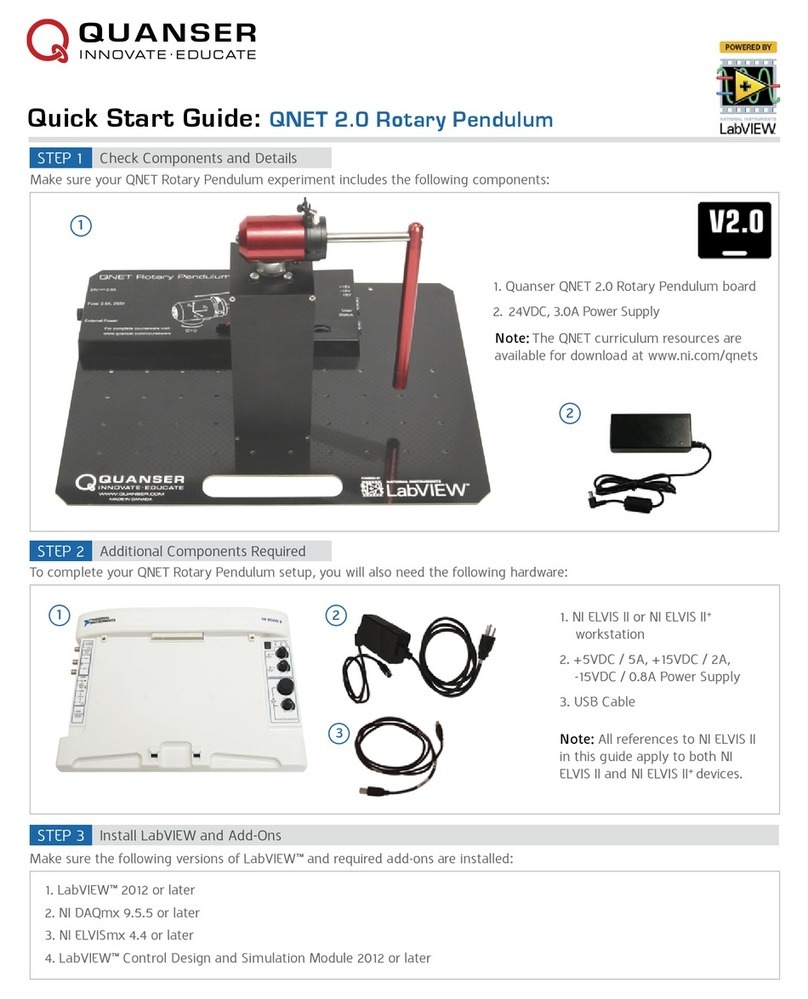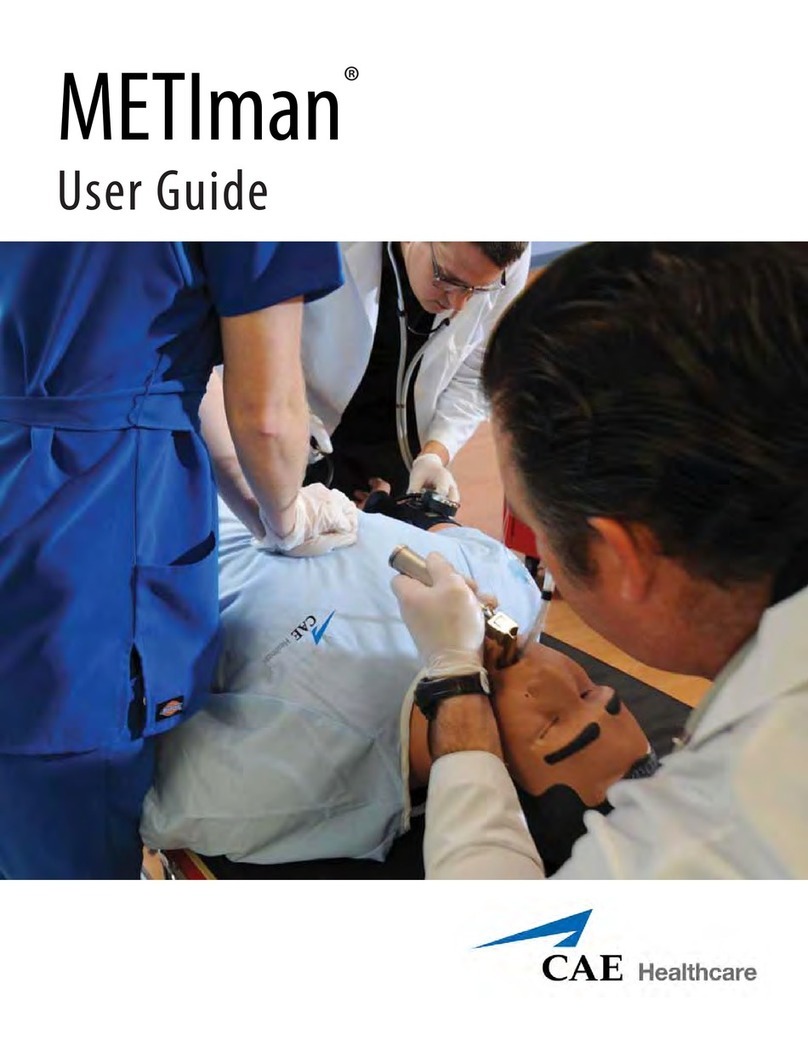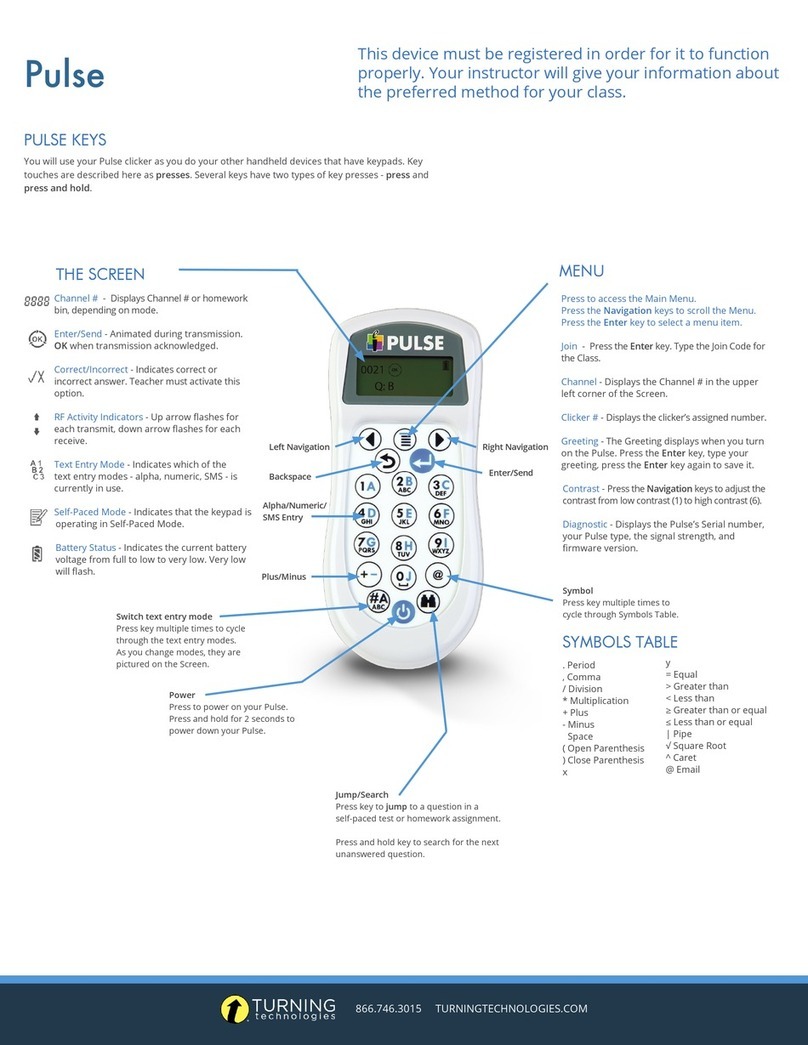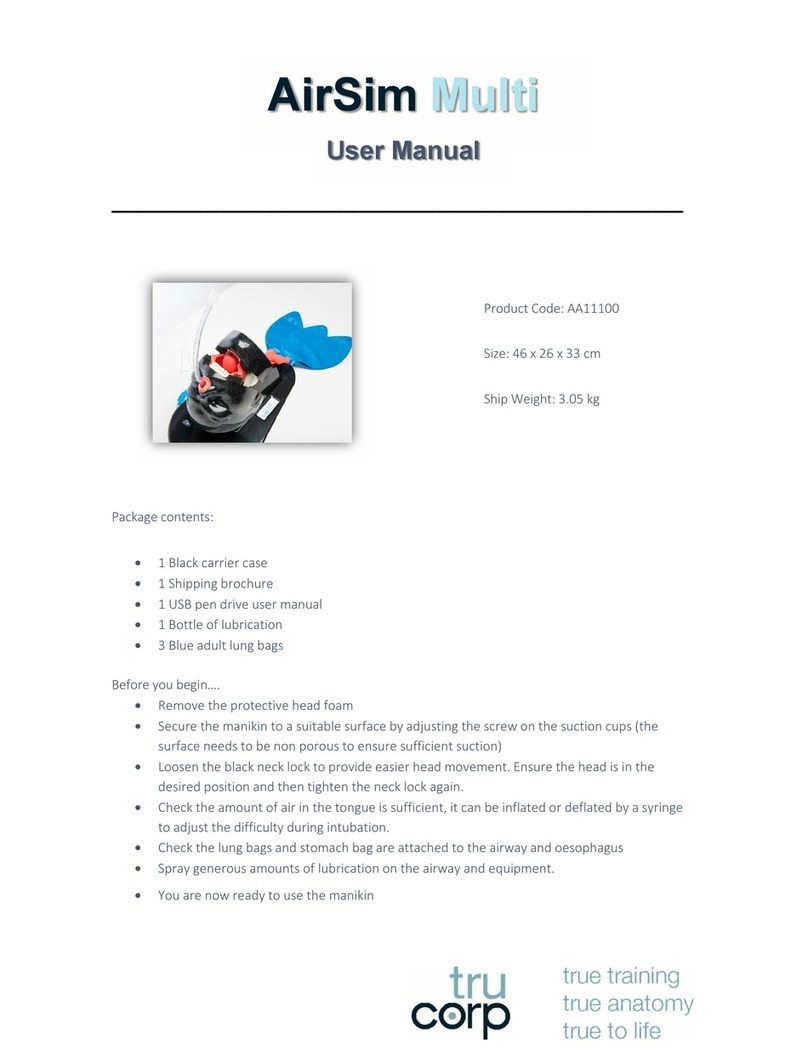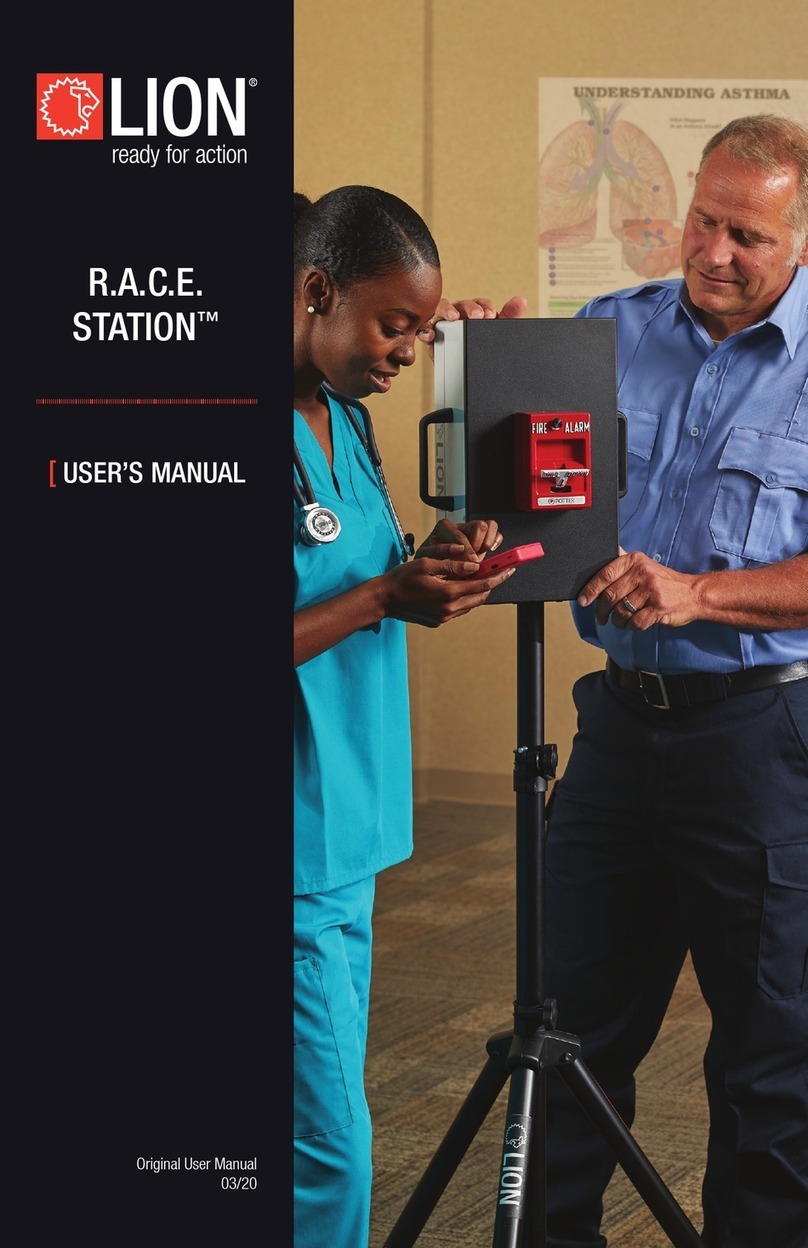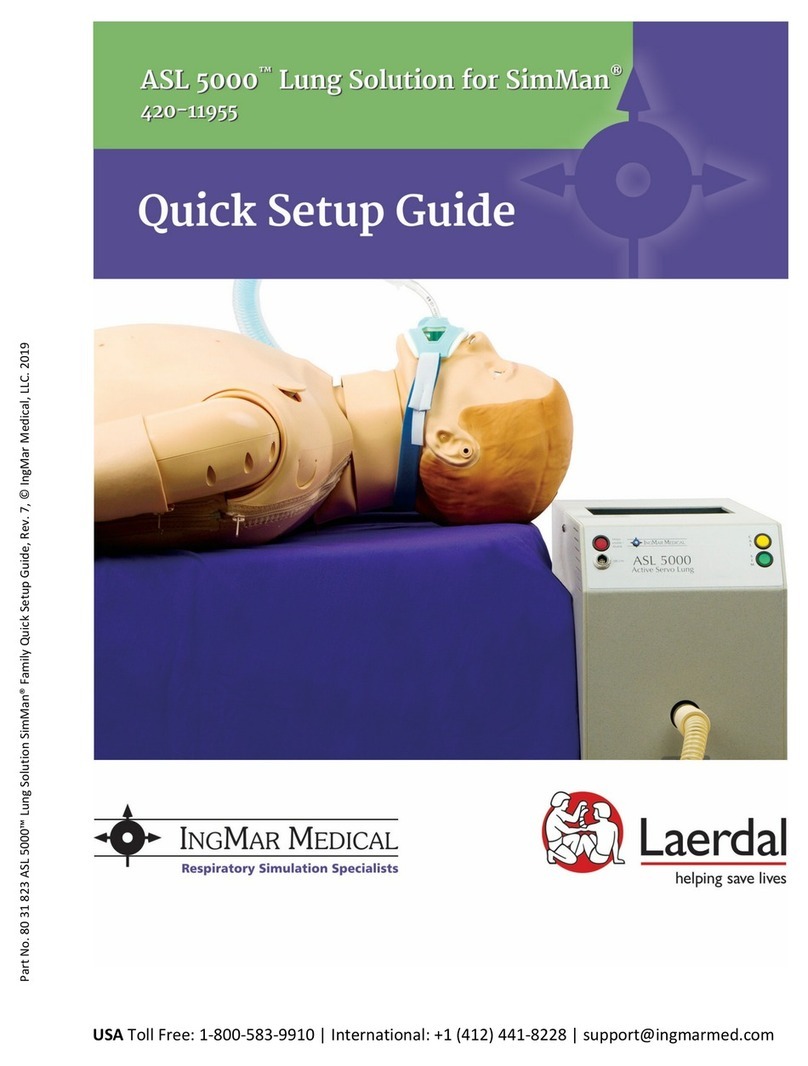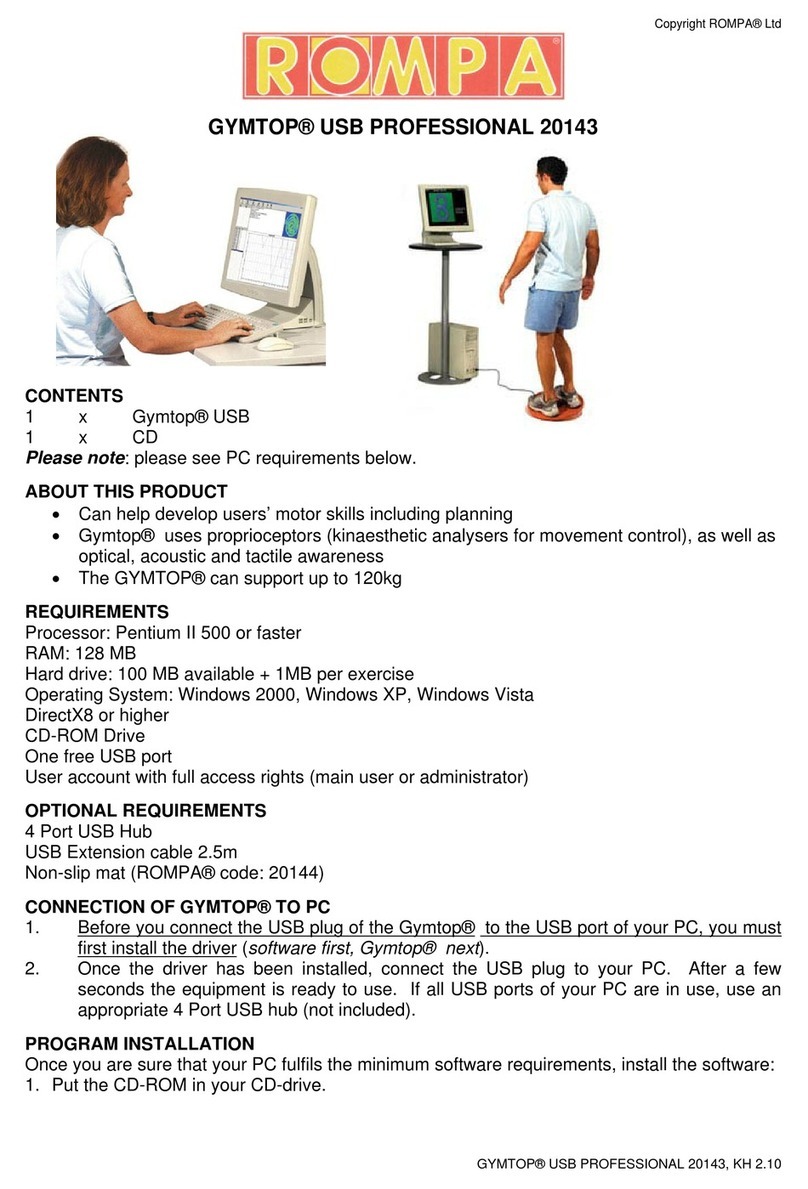
M
ains Power Connector (11): Use a certied cattle plug to connect the quED
controller to a power socket. The input voltage has to be in the range between 100
and 230 V AC, 50 to 60 Hz and can draw up to 180 W.
4 Twin APD Module
On the right-hand side of the controller there is the twin APD module. It works as a
two-channel single photon counter. It is a vital part of the quED system and should be
handled carefully. When no optical bers are attached to the inputs the protective caps
should always be used to cover them. Please be careful not to expose the APD inputs to
very bright light. Normal room light intensities should be no problem, however.
Warning:
Never remove or install the APD module while
the controller is running. It will get damaged.
Status LEDs
The two LEDs display the internal status of the APD module:
Power LED Temp LED Meaning
on ashing
Internal temperature (i.e. the temperature
of the APDs themselves) out of bounds (e.g.
during start-up), trying to reach desired
value.
constantly on or o constantly on or o Everything is O.K.
ashing o Module is booting
ashing Module has registered a problem. See trou-
bleshooting.
Tip: High Background Count Rate
It sometimes happens that there is a high back-
ground count rate in one or both APDs. Often this results from stray light coming
in through the ber connection at the front panel. If you encounter this problem,
please try to cover the ber connections e.g. with some black tissue and/or switch
o unnecessary light sources.
Troubleshooting
When the two LEDs of the APD module are ashing, it has encoun-
tered a problem. There may be dierent reasons for that, e.g. the desired temper-
ature was not reached after 10 minutes. We suggest to do the following:
www.qutools.com
quCR Manual Version 3.2
Page 6
